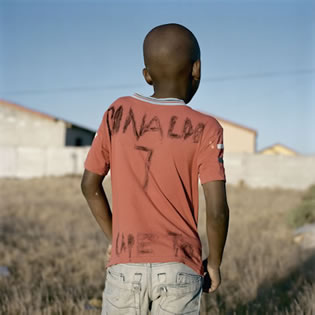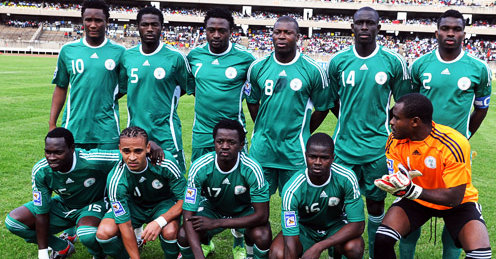Cross-posted from Idrottsforum
Highly original, meticulously researched, profoundly empathetic

African national teams in the 2014 World Cup will rely overwhelmingly on Europe-based players. Here are the exact numbers according to the preliminary lists recently released by FIFA:
Cameroon: 26 out of 28
Ivory Coast: 26 out of 28
Nigeria: 25 out of 30
Ghana: 25 out of 26
Algeria: 25 out of 30
The data reveal that nearly nine out of ten Africans likely to be in Brazil next month play for European clubs. 127 out of 142 players, or 89.4 percent, to be exact. Just over half (52.1 percent) of these players come from Big 5 leagues (England, Spain, Italy, Germany, Spain).
Four years ago, the percentage of Europe-based players in the final 23-man squads of the six African nations was around 80 percent (click here for data). This lower figure stemmed largely from South Africa’s use of players from its domestic Premier Soccer League, ranked among the Top 10 richest leagues in the world.
The 2014 numbers also reveal that nine of the fifteen Africa-based players on the preliminary lists are goalkeepers. In other words, a minuscule 0.42 percent of “outfield” players are on the books of African clubs.
The export of talent from Africa to Europe, as the academic research demonstrates, has produced winners and losers. In strictly economic terms, benefits accrue to individual players who make it into European football, as well as to African coaches, scouts, and other local stakeholders in this global commodity chain. But in the end the lion’s share of the financial rewards in this relationship go to European clubs and leagues, usually at the expense of the sustainability and quality of domestic leagues and clubs in Africa.
***
Addendum (4pm ET, May 23, 2014)
In response to @TonyKaron’s comment on Facebook about the similarities of Africa with Latin America, here are the numbers for foreign-based players on South American team lists:
Brazil: 19/23 (18 Europe, 1 Canada)
Chile: 19/26 (15 in Europe, 3 Brazil, 1 Mexico)
Colombia: 24/27 (18 Europe, 2 Mexico, 3 Argentina, 1 Brazil)
Uruguay: 24/25 (16 Europe, 1 Japan, 4 Brazil, 1 Argentina, 1 Paraguay, 1 Mexico)
Ecuador: 17/30 (5 Europe, 7 Mexico, 1 Colombia, 1 Brazil, 1 USA, 1 Saudi Arabia, 1 UAE)
Argentina: 22/26 (20 Europe, 1 Brazil, 1 Mexico)
Total: 125/157 (79.6 percent)
I also ran the Asia numbers:
Australia: 22/30 (17 Europe, 1 USA, 1 Japan, 1 S. Korea, 1 China, 1 Qatar)
Japan: 12/23 (all in Europe)
Iran: 10/30 (7 Europe, 1 Qatar, 1 Canada, 1 Kuwait)
South Korea: 17/23 (9 Europe, 4 Japan, 3 China, 1 Saudi Arabia)
Total: 61/106 (57.5 percent)

European clubs own more than 80 percent of Africa’s World Cup players. Final squad lists show that 112 of the 138 players are based in Europe and one in Asia (Qatar). Nigeria’s entire team is made up of players competing in nine different European countries!
Let’s break down the rest. Ivory Coast: 22 out of 23 (in 11 European countries); Cameroon: 22 out of 23 (9 countries); Algeria: 20 out of 23 (9 countries); Ghana: 19 out of 23 (9 countries); South Africa: 7 out of 23 (5 countries). The Big 5 leagues — England, Spain, Italy, Germany and France – capture the lion’s share of Africa’s World Cup players, 70 percent to be precise.
South Africa represents an anomaly due to its well-endowed Premier Soccer League, ranked in the Top 10 of the world’s richest leagues. If we were to take South Africa’s team members out of the equation, then 93 percent of Africans in this year’s World Cup are based in overseas clubs. And five of the nine players still playing club football in Africa are goalkeepers.
‘After the flight of brains Africa is confronted with the muscle exodus,’ noted Issa Hayatou, President of CAF. ‘The rich countries import the raw material — talent — and they often send to the continent their less valuable technicians. The inequality of the exchange terms is indisputable. It creates a situation of dependence and the impoverishment of some clubs . . . and of national championships.’ Paradoxically, the more African superstars like Drogba shine in Europe’s elite leagues, the more likely everyday football on African soil will suffer.